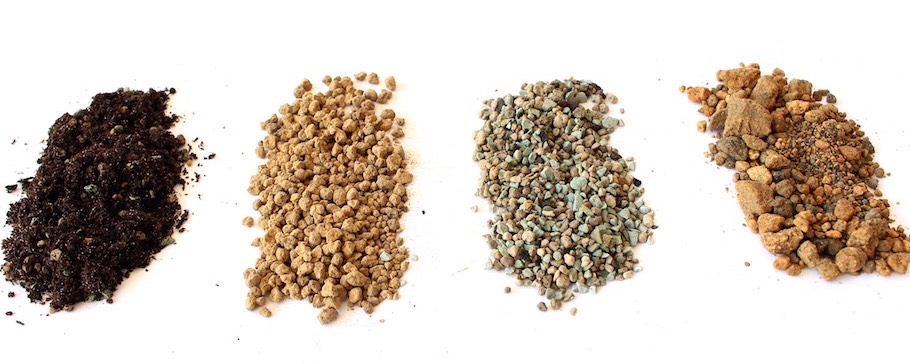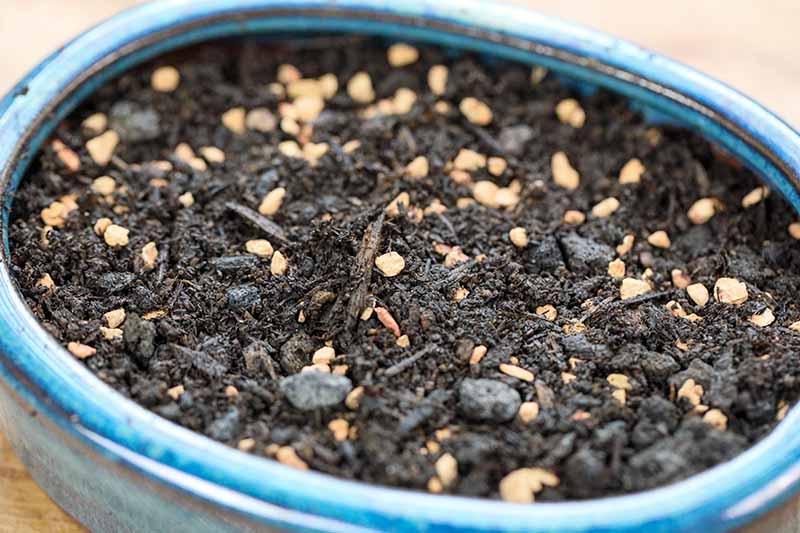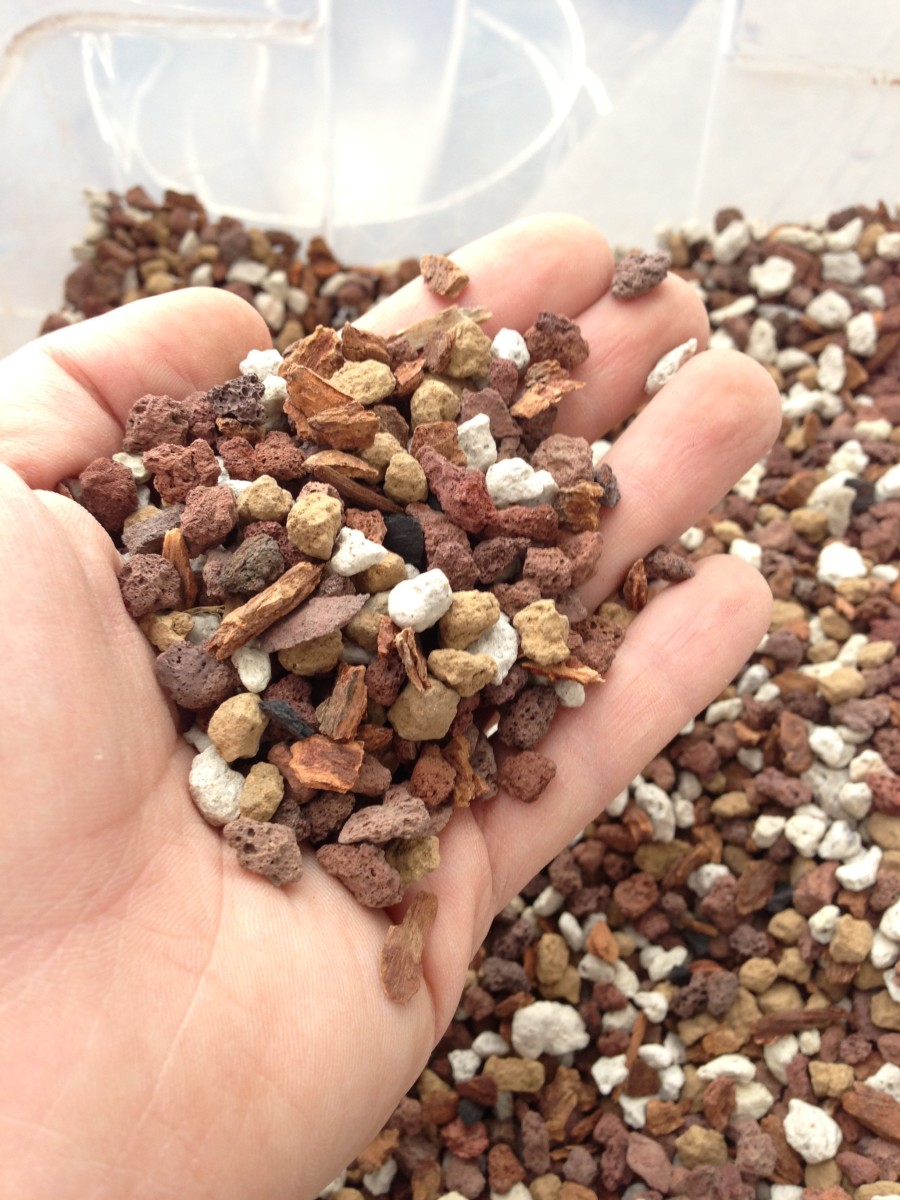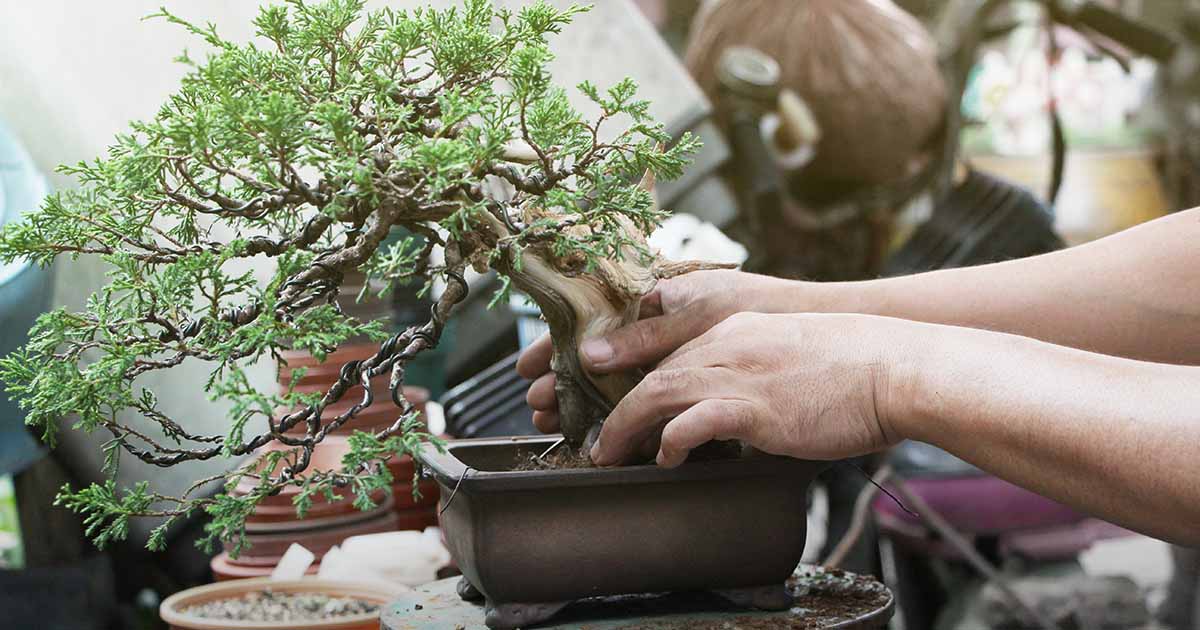In the following paragraphs, we'll take a look at the differing types of soil and substrates used in bonsai cultivation, which includes natural and organic and inorganic possibilities.
We are going to also learn encouraged soil mixtures for numerous bonsai species, such as deciduous, coniferous, and indoor kinds. From akadama and pumice to moss and river sand, we are going to dive into the interesting planet of bonsai soil and enable you to understand why It is really a very important Section of cultivating these exquisite trees.

Bonsai soil
What is bonsai soil?
Bonsai soil is a specialized type of soil that is specifically formulated for growing and maintaining bonsai trees. Unlike regular garden soil, bonsai soil is well-draining and provides the necessary nutrients and moisture balance for the tree's root system. The composition of bonsai soil is carefully designed to meet the unique needs of bonsai trees, ensuring their health and longevity.
The importance of bonsai soil
The choice of soil plays a crucial role in the success of your bonsai tree. The right soil provides optimal drainage, allowing excess water to flow freely and preventing root rot. It also promotes a healthy and well-developed root system, which is essential for the overall health and growth of the tree. Bonsai soil retains moisture while allowing air to reach the roots, striking the perfect balance for the tree's needs. Choosing the right bonsai soil is essential for maintaining a healthy and thriving bonsai tree.
Bonsai substrates
What are bonsai substrates?
Bonsai substrates refer to the different materials that can be used to create the ideal soil composition for bonsai trees. These substrates are carefully chosen to meet the specific needs of different species of bonsai trees and to ensure proper water drainage and nutrient availability.
Different types of bonsai substrates
There are various types of bonsai substrates available, each with its own unique characteristics and benefits. Some common bonsai substrates include:
- Organic materials: These include ingredients such as bark, peat moss, and coconut coir. Organic substrates help retain moisture and provide essential nutrients to the bonsai tree.
- Inorganic materials: These consist of elements like pumice, lava rock, and akadama. Inorganic substrates offer excellent drainage, making sure that surplus drinking water will not accumulate across the roots of the bonsai tree.
- Soil amendments: These are typically substances which might be included to the soil mixture to improve its Attributes. Samples of soil amendments include things like perlite, vermiculite, and sand. They improve the soil's aeration, water-Keeping capacity, and nutrient availability.
By knowing the different types of bonsai substrates as well as their Houses, it is possible to decide on the most suitable one for your personal bonsai tree's demands.
Organic or Inorganic Soils
Natural soils for bonsai
Natural and organic soils for bonsai are made up of all-natural products for example bark, peat moss, coconut coir, and compost. These supplies give a prosperous source of nutrients for the bonsai tree and endorse nutritious root progress. Natural soils even have very good water retention Homes, guaranteeing that the tree gets enough humidity amongst watering classes. However, it's important to note that organic soils may perhaps break down over time and develop into compacted, bringing about bad drainage and opportunity root concerns.
Inorganic soils for bonsai
Inorganic soils for bonsai encompass resources like pumice, lava rock, akadama, and soil amendments like perlite or vermiculite. These materials have exceptional drainage Qualities, preventing waterlogged soil and advertising and marketing aeration across the roots. Inorganic soils are most popular by several bonsai fans due to their longevity and talent to supply a stable setting for the bonsai tree's root technique. Nevertheless, They might require additional frequent watering and extra fertilization, as they don't hold just as much humidity or nutrients as natural soils.
Advantages and drawbacks of working with organic and inorganic soils for bonsai
Deciding on between organic and natural and inorganic soils for your bonsai tree is dependent upon various aspects, such as the specific species of tree, your local weather, and private Tastes. Listed below are the pluses and minuses of each:
Natural and organic soils:
- Professionals: Provide nutrients, excellent water retention, endorse wholesome root advancement.
- Downsides: May perhaps break down with time, probable for bad drainage Otherwise effectively maintained.
Inorganic soils:
- Professionals: Excellent drainage, prolonged-Long lasting, steady natural environment for roots.
- Negatives: Less water retention, could need far more frequent watering and fertilization.
By taking into consideration the positives and negatives of equally natural and organic and inorganic soils, you can also make an informed choice depending on the particular demands within your bonsai tree.
Soil factors
Key components of bonsai soil
Bonsai soil is typically composed of three principal parts: grit, organic and natural subject, and clay. These factors do the job alongside one another to create the ideal soil structure for your bonsai tree's root method.
- Grit: Grit, including sand or perlite, gives drainage and aeration inside the soil. It helps avoid waterlogging and permits air to reach the roots.
- Natural make any difference: Natural subject, which include compost or bark, delivers nutrients for the bonsai tree. In addition it aids keep dampness and Increase the soil's General framework.
- Clay: Clay particles present some water retention attributes and support bind the soil jointly. On the other hand, a lot of clay can result in lousy drainage and compaction.
Part of each and every soil component
Every soil part performs a vital function in making a properly-balanced and balanced environment for that bonsai tree's roots.
- Grit: Grit presents the necessary drainage and aeration while in the soil. It prevents the roots from sitting in stagnant water, reducing the chance of root rot and promoting overall root health.
- Organic subject: Natural make a difference supplies vital nutrients to your bonsai tree. It aids in dampness retention and contributes to the general construction from the soil.
- Clay: Clay particles assistance bind the soil jointly and supply some water retention potential. Even so, it is important to balance the quantity of clay to prevent difficulties like weak drainage and compaction.
By knowing the roles of every soil ingredient, you'll be able to develop a balanced bonsai soil blend that fulfills the precise requirements of your tree.

Recommended Bonsai soil mixtures
Common bonsai soil mixtures
There are several common bonsai soil mixtures that have been proven effective for various types of bonsai trees. These mixtures typically consist of a combination of inorganic substrates, organic matter, and soil amendments.
Some of the commonly used bonsai soil mixtures include:
- Akadama, pumice, and lava rock: This mixture is popular among bonsai enthusiasts for its excellent drainage and water retention properties.
- Akadama, lava rock, and organic and natural subject: This combination combines the main advantages of inorganic substrates While using the nutrient-wealthy Attributes of natural make any difference.
- Pumice, perlite, and bark: This combination provides superior drainage and aeration though retaining some humidity and supplying nutrients.
These are generally just a few examples of bonsai soil mixtures, and The perfect mixture will rely upon the specific needs within your bonsai tree as well as your climate.
Factors to consider when picking a bonsai soil mixture
When picking a bonsai soil mixture, it's important to look at the subsequent variables:
- Species of bonsai tree: Different species have distinct humidity and nutrient demands. Investigate the precise requirements within your tree to pick a soil combination that meets its prerequisites.
- Local weather: The climate you reside in can influence the moisture retention Homes in the soil. Take into account the typical humidity and temperature in your neighborhood When selecting a soil combination.
- Watering patterns: Your own watering routines and plan really should align with the soil combination you choose. Some mixtures have to have extra Regular watering, while some keep moisture for for a longer time durations.
- Spending budget: Some soil elements can be more expensive than Other individuals. Take into consideration your funds when deciding upon a soil mixture.
By getting these elements under consideration, you'll be able to decide on a bonsai soil combination that provides the most beneficial developing ailments on your tree.
Deciduous Bonsai soil
Best soil composition for deciduous bonsai
Deciduous bonsai trees, which include maple or birch, have unique soil needs to support their expansion and overall health. The best soil composition for deciduous bonsai usually includes a mixture of natural and organic make a difference, inorganic substrates, and soil amendments.
A encouraged soil composition for deciduous bonsai may perhaps consist of:
- Akadama: Presents good h2o retention though permitting for drainage. In addition, it releases nutrients bit by bit after some time.
- Pumice: Promotes aeration and drainage during the soil, preventing waterlogging.
- Bark or peat moss: Adds natural subject to your soil, providing nutrients and dampness retention.
This soil composition ensures that the roots of deciduous bonsai trees obtain the best harmony of humidity, nutrients, and oxygen for ideal growth.

Coniferous and Pine soil
Ideal soil mixture for coniferous and pine bonsai
Coniferous and pine bonsai trees have specific soil requirements due to their water retention needs and preference for acidic soil. An ideal soil mixture for coniferous and pine bonsai should provide good drainage while retaining moisture and maintaining the desired pH level.
A recommended soil mixture for coniferous and pine bonsai may include:
- Akadama: Provides excellent water retention while allowing for sufficient drainage. It releases nutrients slowly over time.
- Pumice: Encourages aeration and drainage within the soil, stopping waterlogged roots.
- Peat moss: Adds organic and natural matter and acidity to the soil, creating a perfect pH level for coniferous and pine trees.
This soil combination ensures that the roots of coniferous and pine bonsai trees acquire the right equilibrium of humidity, nutrients, and acidity for his or her precise desires.
Akadama
What on earth is akadama?
Akadama is a form of clay soil which is broadly Utilized in bonsai cultivation. It truly is known for its superb water retention Attributes, which be certain a gradual offer of dampness for the bonsai tree's roots. Akadama is usually prized for its capability to release nutrients little by little with time, supplying a reliable source of nourishment to the tree.
Advantages of applying akadama in bonsai soil
Working with akadama in bonsai soil gives a number of Advantages:
- Water retention: Akadama has Fantastic drinking water retention properties, allowing it to hold humidity without getting waterlogged. This makes sure that the bonsai tree's roots get a steady source of drinking water, advertising and marketing healthy development.
- Nutrient launch: Akadama gradually releases nutrients into the soil eventually, providing a dependable supply of nourishment for the bonsai tree. This cuts down the need for frequent fertilization and allows preserve a well balanced nutrient profile.
- Aeration: Even with its water retention abilities, akadama also gives adequate aeration to your bonsai tree's roots. It permits air to reach the root technique, stopping issues for instance root rot as a result of lack of oxygen.
By incorporating akadama to the bonsai soil, you are able to build an exceptional escalating surroundings to your tree, making sure its overall health and vitality.

Lava rock
How lava rock benefits bonsai soil
Lava rock is a popular component in bonsai soil mixtures due to its excellent drainage and aeration properties. It is typically used in conjunction with other substrates to create the ideal soil composition for bonsai trees.
The benefits of lava rock in bonsai soil include:
- Drainage: Lava rock provides excellent drainage, preventing waterlogging and ensuring that excess water flows freely through the soil. This helps prevent root rot and provides a healthy environment for the roots to thrive.
- Aeration: The porous nature of lava rock lets air to circulate in the soil, providing oxygen for the bonsai tree's root procedure. Right aeration is essential for healthier root growth and Over-all tree growth.
- Longevity: Lava rock is a strong content that does not break down effortlessly. This ensures that the soil composition remains stable with time, minimizing the need for frequent soil replacements.
Lava rock is accessible in several measurements and designs, making it possible for for customization based upon the precise wants of your bonsai tree and soil requirements.
Different types of lava rock
You will discover differing kinds of lava rock that could be Employed in bonsai soil mixtures, including:
- Black lava rock: Black lava rock is often a commonly employed product in bonsai soil mixtures. It offers great drainage properties and adds an aesthetic aspect to the general presentation on the bonsai tree.
- Pink lava rock: Purple lava rock is yet another well known preference in bonsai soil mixtures. It provides similar drainage and aeration Positive aspects as black lava rock but has a definite reddish coloration that provides Visible curiosity towards the container.
Both black and pink lava rocks are broadly accessible and might be quickly included into your bonsai soil combination.
Potting
Necessary tips for productive bonsai potting
Potting can be a important system in bonsai cultivation, as it straight impacts the wellness and progress of your tree's roots. Here are a few necessary guidelines for successful bonsai potting:
- Choose the proper pot sizing: Find a bonsai pot that permits for root development although even now giving a cosy healthy. Stay clear of pots which have been much too large, because they can cause extreme soil dampness and lousy root enhancement.
- Use bonsai wire: Protected the tree during the pot using bonsai wire to ensure balance. This helps prevent the tree from shifting or turning into uprooted through watering or potent winds.
- Trim and spread the roots: Ahead of potting the bonsai tree, meticulously trim and unfold out the roots. This encourages outward progress and helps prevent root tangling or root-certain troubles.
- Incorporate mesh screens: Area mesh screens above the drainage holes at the bottom from the pot to avoid soil erosion and be certain appropriate drainage.
- Use refreshing bonsai soil: When potting, constantly use clean bonsai soil to deliver the required nutrients and best rising ailments to the roots.
By adhering to these crucial suggestions, you'll be able to make certain a successful potting process and endorse the general overall health and development of your bonsai tree.
The function of bonsai pots in soil dampness Regulate
Bonsai pots Participate in an important position in soil moisture Manage, straight impacting the well being and growth with the tree. Bonsai pots are generally shallow and also have drainage holes, allowing excessive drinking water to escape and blocking the soil from starting to be waterlogged.
The design of bonsai pots encourages evaporation and air circulation, which can help control soil dampness levels. The shallow depth and broad opening of the pot expose additional surface area area of your soil to your air, aiding in moisture evaporation. This stops the roots from sitting down in excessively moist soil, reducing the potential risk of root rot and also other water-similar concerns.
Additionally, the drainage holes in bonsai pots make it possible for any surplus water to escape, stopping waterlogged soil and marketing aeration throughout the roots. Appropriate aeration is essential for the wellbeing and improvement of the foundation program, making sure the bonsai tree receives the mandatory oxygen for development.
By using bonsai pots created for powerful moisture Manage, you can make a favorable environment for the bonsai tree's roots and promote its overall overall health and vitality.
In summary, selecting the suitable bonsai soil is vital for your achievements and well being of website your bonsai tree. Comprehension the different sorts of bonsai substrates, the job of natural and organic and inorganic soils, The true secret components of bonsai soil, and the varied recommended soil mixtures will assist you to give the optimal increasing disorders to your bonsai tree. Whether you've got a deciduous check here or coniferous bonsai, incorporating materials like akadama and lava rock can improve the soil's drainage and nutrient availability. In addition, taking note of potting methods and utilizing bonsai pots created for moisture Command will more support the flourishing advancement of one's bonsai tree. With right understanding and implementation of bonsai soil procedures, you may benefit from the attractiveness and artistry of bonsai cultivation For some time to come.
